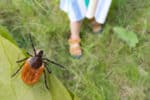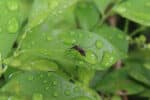
Termites 101: A South Florida Homeowners Guide
South Florida is an attractive place to call home. It’s no wonder termites also love West Palm Beach, Miami, Fort Lauderdale, Naples, Fort Myers, Fort Pierce and other South Florida neighborhoods. In fact, termites are predicted to damage over 50% of South Florida structures by 2040, according to University of Florida researchers.
As leading pest and termite control experts in the region, many home and business owners ask us “is termite protection necessary in Florida?” The answer is that “yes, it absolutely is necessary”, and the reality is that effective termite prevention and control can save you quite a bit of money in otherwise costly termite damage home repairs. When asking “is termite protection necessary in Florida?” consider the fact that these pests cause billions of dollars in damage each year.
There are several common types of termites in Florida, each of which can cause extensive damage to the structures they invade. Unfortunately, many South Floridians don’t notice the termite signs and symptoms until it is too late. At Hulett Environmental Services, our professional technicians know how to get rid of termites in Florida most effectively, ensuring that they are gone from your premises.
For expert termite control in South Florida, call Hulett today and schedule your FREE inspection. We will arrive at your home or property, correctly identify the types of termites that are infesting your space, and develop a customized treatment plan tailored to meet your individual needs (no-tent treatment options are available). Don’t wait until termites have eaten away at your greatest asset–protect your home or business today.
What kinds of termites are we talking about here?
The four major types of termites in Florida that could infest your home are:
- Drywood termites, such as Cryptotermes brevis, the West Indian Drywood Termite, are usually found throughout Florida, especially in coastal areas, and also throughout the southern and southwestern states. For your convenience, we offer a variety of treatment options, including a no-tent solution to treat termites.
- Formosan termites that can be found throughout the southeast, especially in Florida, but also Hawaii.
- Asian subterranean termites that are currently confined to South Florida.
- Native subterranean termites (Reticulitermes) that can be found in most of the US.
There are a few other types of termites that can be found in South Florida, too!
For example, the Florida Dampwood termite is another common termite in South Florida. However, they remain off the list of the top four termites because thankfully, under normal conditions in homes without moisture issues, these termites are typically unable to infest and are typically limited to the landscape.
Each of these types of termites presents unique challenges to homeowners, who are advised to contact a professional pest control company, such as Hulett, at the first sign of termite activity. Regularly scheduled year-round protection is the best way to prevent termites in South Florida, but educated homeowners can also help spot any termite activity before extensive damage is done.
Subterranean termites can cause extensive structural damage
Because subterranean termites live in the soil, they typically enter homes from the ground, near your foundation. They may go unnoticed for quite some time because they are hidden out of sight within mud tubes, and they can cause widespread damage that may not be covered by your homeowner’s insurance.
Native subterranean termites, the most widely distributed subterranean termites in the US, consist of soldiers, with a dark-orange and rectangular head-capsule, with smooth and curved jaw-like mandibles. The soldiers measures about the same size as workers, at .25″ long. Alates or reproductives, have dark brown to black bodies and measure about .375″ long, including their membranous and net-like wings.
The invasive Formosan termite has cream-colored termite workers and wingless soldiers. The soldiers have a tear-drop shaped head capsule, with a forward facing fontanelle that is able to secrete a white substance as a defense against ants. These soldiers also have smooth mandibles for defense. The “swarmers” are large and a uniform light-yellow color, with hairy bodies and wings.
The Asian subterranean termite is a tropical species that looks very similar to Formosan termites, except these termite swarmers are bi-colored, with yellow “bellies” and dark-caramel “backs”.
Invasive Vs Native Subterranean Termites
Native subterranean termites are able to do extensive damage to homes in a short amount of time. However, it is the invasive subterranean termites in South Florida, namely the Asian and Formosan Subterranean Termite, that are a large concern for South Florida homeowners. The main difference being the maximum colony size potential, which is far greater with the Asian and Formosan subterranean termites, as compared to the Native species. Formosan termite populations can number in the millions and Formosans infest structural timbers, fences, sheds, live and dead trees, and wood found in crawl spaces, within walls, and even the attic. Because these termites are coming from the ground, Earthen tubes running up walls and trees are clear indications of subterranean termite activity. These invasive subterranean termites can infest and cause extensive damage to a structure in a matter of a few months. If you see many termite bodies or discarded wings of swarmers in your home, this can also point to a subterranean termite infestation.
Drywood termites do not need moisture or soil contact to survive
Drywood termites on the other hand, do not live in the soil or open-forage for food. Drywood termites live contained within the wood they infest. Because they live within their food, and are protected by the wood from most predators, drywood termites don’t have many soldiers. So it may be difficult to identify whether or not you have West Indian Drywood Termites, the most common drywood termite here in South Florida, by being able to identify the soldier alone, because they make up only 1 to 2% of a colony. But if you do see a soldier, they have rough-textured heads that are reddish-black and kind of resemble a plug. Swarming alates are more visible, measuring .33″ to .38″ long, including two pairs of clear, membranous wings, with dark veins and long straight antennae. Wings found on windowsills and around light fixtures can indicate drywood termite activity, especially if the wings have an iridescent tint.
Many homeowners report seeing pests swarm during the warm seasons. These can be many different types of insects, but mostly ants, and unfortunately, termites too. Termites may resemble ants, except for they will have straight antenna instead of bent, they will have a wide waist instead of pinched, and they tend to drop their 4, equal sized wings so they can better crawl through cracks and crevices. Thankfully most of the swarmers will die before being able to start a new colony, so homeowners commonly see their carcasses dehydrated and appearing on the floor or windowsill, as well as the shed wings.
Should you notice what looks like many small, translucent wings, coupled with what you think are ants or black termites in Florida, do not wait to contact a professional pest and termite control service. It is likely that these invaders may have already made their home inside your walls, or indicate that they are nearby in the neighborhood or landscape.
Drywood termites can also infest wood in furniture
Drywood termites are also known to infest various sources of wood that can be found within the home. Drywood termites can be found in wood timbers in the doors, windows, walls, attic, etc., but also cabinetry, flooring, wooden frames, windowsills, fascia, and furniture. When drywood termites are feeding, homeowners are likely to see piles of distinctive, six-sided, fecal pellets resembling sawdust or coffee grounds. There are a tell-tale sign of infestation. The drywood termites are feeding within the wood, and expelling their fecal material outside of “kick out holes” in order to make room for their growing colony. This can make the infested wood surfaces look blistered or warped, sound hollow when tapped and may puncture easily with a screwdriver or other tool. Although drywood termite damage is centralized to one area, multiple colonies may be found within a home.
How to get rid of termites in Florida
Once you notice signs of termite infestation and damage around your home or property, it may be tempting to try to eradicate the colonies on your own. After all, many individuals wish to avoid the inconvenient, unsightly, embarrassing tent fumigation so commonly associated with termite treatment.
However, tenting is often not necessary for effective treatment. In fact, Hulett Environmental Services offers friendly, convenient no-tent treatment options for several types of termites. There’s often no need to vacate your home, bag or remove food or medication, temporarily relocate your pets, or announce your termite problem to the entire neighborhood. Our professionals offer prompt, effective, and discrete treatment.
If you believe that termites are colonizing your home, or you want to make a plan for year-round termite defense, contact us today. Professional termite control is the best way to get rid of termites in Florida. We will develop a treatment plan that meets the needs of your family, including proper identification of the types of termites present, potential attractants or conducive conditions on your property, and regular service and maintenance that can prevent future infestations.
Dealing with a termite infestation requires a trusted professional pest control company
If your property is dealing with termites, or if you just want help from a professional to try and avoid this problem from happening in the first place, Just Call Hulett. Hulett is a leader in the termite eradication business for over 50 years, specializing in soil treatment, specialized baiting systems, tent fumigation, and also a no-tent drywood termite treatment. Protect your most valuable investment today by scheduling your free inspection where a trained inspector will discuss with you a customized plan that fits the needs of you and your home, and our technicians are trained to help protect your home from all types of South Florida termites. Just call Hulett! It’s time to schedule your free termite inspection.



